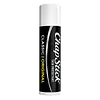What's inside
What's inside
 Key Ingredients
Key Ingredients

 Benefits
Benefits

No benefits
 Concerns
Concerns

 Ingredients Side-by-side
Ingredients Side-by-side

Petrolatum 45%
EmollientArachidyl Propionate
EmollientCamphor
MaskingCopernicia Cerifera Wax
Cetyl Alcohol
EmollientParfum
MaskingIsopropyl Lanolate
EmollientIsopropyl Myristate
EmollientLanolin
EmollientParaffinum Liquidum
EmollientOctyldodecanol
EmollientOleyl Alcohol
EmollientParaffin
PerfumingPhenyl Trimethicone
Skin ConditioningCI 15850
Cosmetic ColorantTitanium Dioxide
Cosmetic ColorantPalau White Clay
HumectantCI 19140
Cosmetic ColorantTridecyl Neopentanoate
EmollientOzokerite
Emulsion StabilisingIsopropyl Myristate
EmollientMicrocrystalline Wax
Emulsion StabilisingMyristyl Myristate
EmollientPolybutene
Dimethicone
EmollientEthylhexyl Palmitate
EmollientPetrolatum
EmollientEthylhexyl Stearate
EmollientAlumina
AbrasiveButylene Glycol
HumectantC12-15 Alkyl Benzoate
AntimicrobialCaprylic/Capric Triglyceride
MaskingCeramide Ng
Skin ConditioningDiethylhexyl Adipate
EmollientAroma
Linoleic Acid
CleansingLinolenic Acid
CleansingPalmitoyl Hexapeptide-12
Skin ConditioningPhenoxyethanol
PreservativePolyhydroxystearic Acid
EmulsifyingSaccharin
MaskingSilica Dimethyl Silylate
EmollientSodium Hyaluronate
HumectantSorbic Acid
PreservativeStearic Acid
CleansingTocopherol
AntioxidantTocopheryl Acetate
AntioxidantTribehenin
EmollientTitanium Dioxide
Cosmetic ColorantTridecyl Neopentanoate, Ozokerite, Isopropyl Myristate, Microcrystalline Wax, Myristyl Myristate, Polybutene, Dimethicone, Ethylhexyl Palmitate, Petrolatum, Ethylhexyl Stearate, Alumina, Butylene Glycol, C12-15 Alkyl Benzoate, Caprylic/Capric Triglyceride, Ceramide Ng, Diethylhexyl Adipate, Aroma, Linoleic Acid, Linolenic Acid, Palmitoyl Hexapeptide-12, Phenoxyethanol, Polyhydroxystearic Acid, Saccharin, Silica Dimethyl Silylate, Sodium Hyaluronate, Sorbic Acid, Stearic Acid, Tocopherol, Tocopheryl Acetate, Tribehenin, Titanium Dioxide
 Reviews
Reviews

Ingredients Explained
These ingredients are found in both products.
Ingredients higher up in an ingredient list are typically present in a larger amount.
Isopropyl Myristate is an emollient, thickening agent, and texture enhancer. It is created from isopropyl alcohol and myristic acid.
It is used to help other ingredients be better absorbed. It is also an emollient and may help soften and hydrate the skin.
The comedogenic rating of this ingredient depends on the concentration. Lower amounts results in a lower rating.
Isopropyl Myristate may not be fungal acne safe. It can potentially worsen acne prone skin.
Learn more about Isopropyl MyristatePetrolatum is more commonly known as petroleum jelly. It is created by mixing waxes and mineral oils.
This ingredient is effective at reducing water loss by 99%. This is because it is an occlusive. Occlusives create a hydrophobic barrier on the skin to prevent evaporation. This property makes it great for hydrating dry skin.
Pro tip: Use occlusives, such as this ingredient, on damp skin for the best results.
The quality or origin of petrolatum is only known when disclosed by the brand. Most cosmetic petrolatum has gone through several purification stages.
Another benefit of occlusives is it protects your skin against infection or allergies.
Petrolatum may not be safe for fungal-acne. Studies show mineral oil / petroleum leads to the growth of M. Furfur, a type of yeast.
Learn more about PetrolatumTitanium dioxide is a mineral UV filter widely used in sunscreens and cosmetics.
It is one of only two UV filters officially classified as “mineral” by regulatory agencies, the other being zinc oxide.
Titanium dioxide provides broad-spectrum protection mostly in the UVB and UVAII range, with some protection in the UVAI range.
While its UVA protection isn’t as strong as zinc oxide’s, the difference is minor.
A common myth is that mineral UV filters reflect UV light. However, modern research shows titanium dioxide absorbs UV radiation like chemical filters (~95% absorption & 5% reflection).
Thanks to its non-irritating nature, titanium dioxide is suitable for sensitive, acne-prone, or redness-prone skin. It is unlikely to cause "eye sting" like other sunscreen ingredients.
A major drawback of this ingredient is its white cast and thick texture. This is why mineral sunscreens often leave a white cast and are less cosmetically elegant than chemical/hybrid sunscreens.
To improve white cast and spreadability, micronized or nano-sized titanium dioxide is often used.
There are ongoing concerns surrounding nano-titanium oxide's impact on marine ecosystems.
There is no conclusive evidence that any form of titanium oxide (or any other sunscreen ingredients) will cause harm to marine ecosystems or coral reefs. The science is still developing but many consumers are keeping a close eye on this issue.
Please note, many destinations have reef-safety sunscreen rules. For instance, the U.S. Virgin Islands advises all visitors to use non-nano mineral sunscreens.
Nano mineral sunscreens once raised safety concerns about absorption into skin.
Extensive research has shown that they do not penetrate healthy or damaged skin; they remain safely on the surface and the top layer of dead skin (stratum corneum).
You'll likely find titanium dioxide bundled with alumina, silica, or dimethicone. These ingredients help make titanium dioxide highly photostable; this prevents it from interacting with other formula components under UV light.
Learn more about Titanium Dioxide